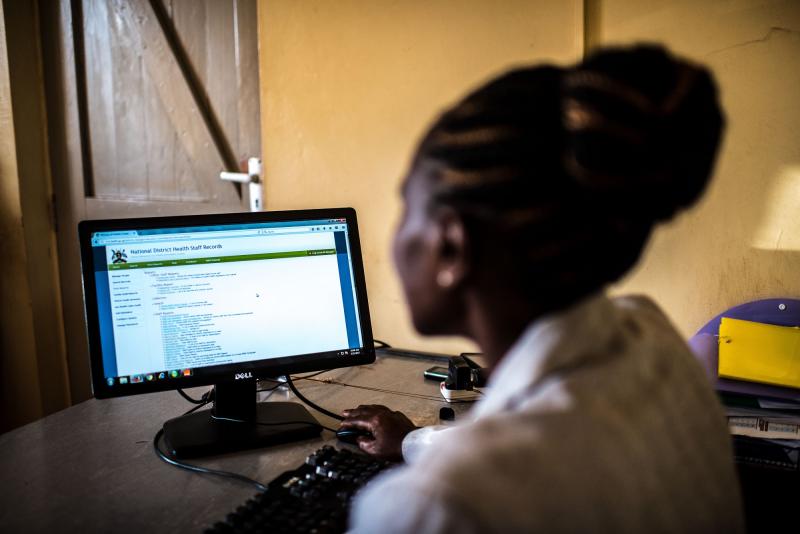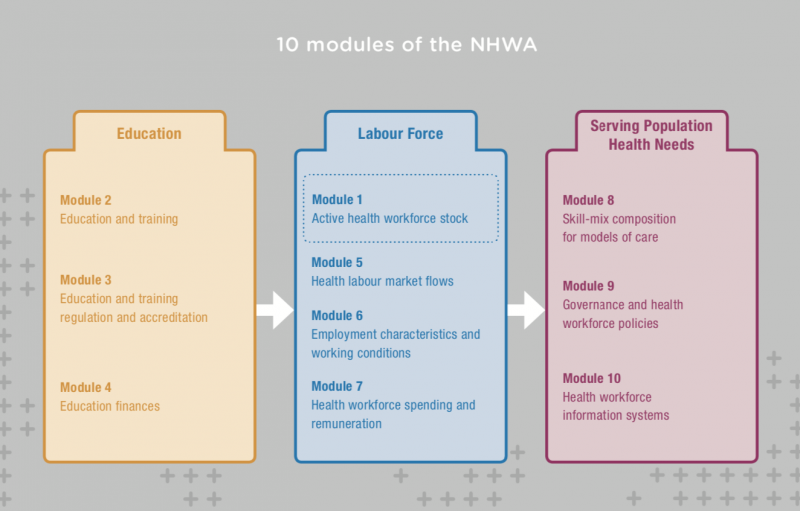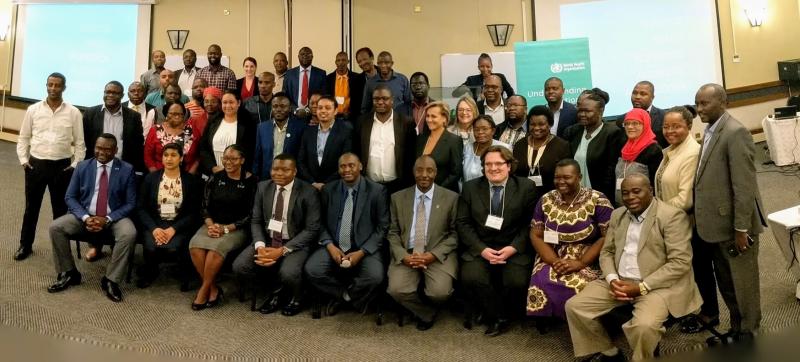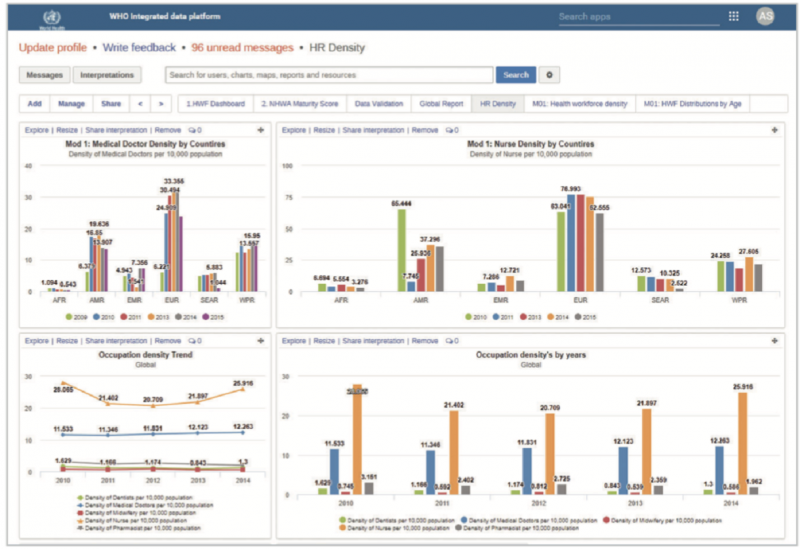Where We Work
See our interactive map


Health officials in Uganda use iHRIS to track health workforce data. Photo by Tommy Trenchard for IntraHealth International.
Better health workforce data can help.
National governments that want to achieve the health-related targets of the United Nations Sustainable Development Goals (SDGs) or universal health coverage (UHC) need a health workforce with the right size and skill mix to meet their populations’ health needs.
But you can’t have a skilled health workforce without teachers and trainers who can prepare health workers for their specific roles in the health care system.
Yet countries globally face challenges in:
In response to these challenges, the World Health Organization (WHO) and its partners developed National Health Workforce Accounts (NHWA) to help governments standardize health workforce information systems and rapidly aggregate and display health workforce data to inform national evidence-based policy decisions.

NHWA is a system of indicators to help countries progressively generate and use higher-quality data on their health workforces to not only achieve universal health coverage but also to inform key policy decisions. For example, NHWA indicators on geographical distribution, distribution by age and by sex, sector ownership and facility types can detect gaps in certain professions or mismatches in geographical distribution. Other indicators track cadre-specific analysis of health worker education and training, including the status of pre-entry, student, and graduation populations, public and private institution distribution, and subnational disaggregation to determine when, where, and with what skills new health workers are entering the workforce.
NHWA can help a country:
In June, IntraHealth International collaborated with the WHO to offer a National Health Workforce Accounts workshop for 53 policymakers from 17 countries across Africa. This week-long training focused on implementing NHWA at the ministries of health, registries, and professional associations which requires countries to identify their key health workforce-related policy questions and new data collection processes to develop and analyze the NHWA indicators that are most important to their countries’ needs.

IntraHealth International collaborated with the WHO to offer a National Health Workforce Accounts workshop. Photo by Wayan Vota for IntraHealth International.
One challenge to developing NHWA indicators is generating accurate data on health workers who are licensed and employed by the Ministry of Health and the private sector. We found that countries that use IntraHealth’s iHRIS suite of solutions to track and manage their health workforce data are better able to overcome this challenge. They already have accurate counts of health workers licensed and employed by the Ministry of Health and therefore can report on this indicator with the push of a button. For example, in Uganda, a digital attendance module, a key feature of the IHRIS suite, tracks which health workers actually came to work on a particular day and how many hours they worked.
iHRIS users can generate reports on indicators throughout the year and analyze subnational health workforce issues that may not rise to annual NHWA levels. As an open source global digital health good, iHRIS is freely available for governments to download and integrate into their health information systems.
Now IntraHealth is developing new tools to support electronic data interchange from iHRIS to the NHWA dashboards hosted by WHO. Our upcoming application to automate the Workload Indicators of Staffing Needs (WISN) method of human resource management will further help ministries to reach their NHWA indicators.

Dashboard view from the NHWA online data platform
The NHWA indicators are designed to be a flexible, modular way to form coherent analyses of health workforce policy frameworks. This allows governments to select and prioritize NHWA modules according to their specific needs and eventually work toward the entire NHWA data set.
For example, NHWA indicators on employment characteristics like distribution of health workers according to working time and status of employment would be directly affected by the relevant national laws and policies regulating working hours and employment types.
Governments can use NHWA to better understand the size, characteristics, and distribution of their health workforces, and how their ministries of health can strengthen them.
NHWA can form the basis for health labor market analyses that inform governments on labor market trends and support intersectoral policymaking, strategic investments to alleviate short-term shortages, and long-term strategies.
NHWA can also inspire intersectoral policy dialogue among the relevant ministries—such as education, finance, and civil service—to strengthen policies, strategies, and plans across the government.
All three of these activities can help countries reach the World Health Organization’s recommended minimum density of 4.45 skilled health workers—including doctors, nurses, and midwives—per 1,000 people, which is necessary for addressing a population’s need for services related to noncommunicable diseases, infectious diseases, and reproductive, maternal, newborn, and child health.
It’s also the only way to achieve universal health coverage and the SDGs.
Get the latest updates from the blog and eNews




